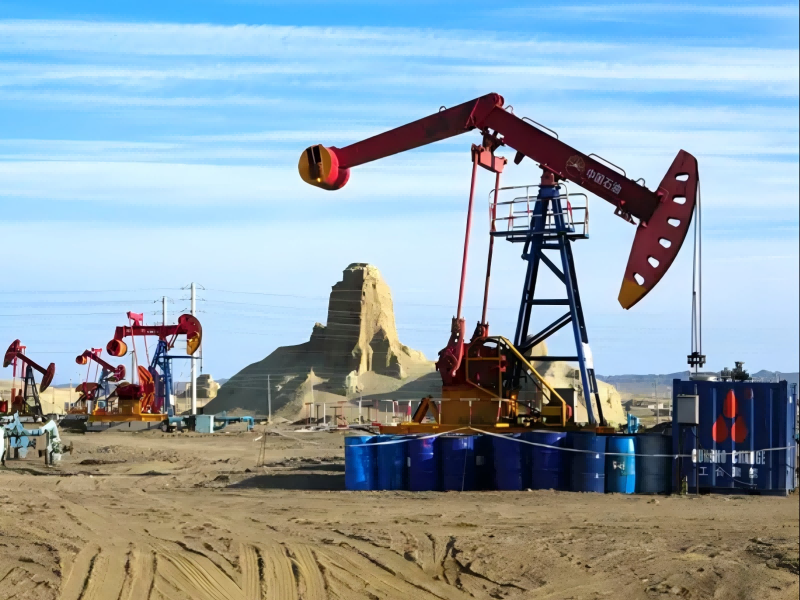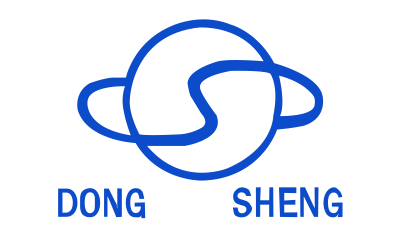1.Overview of Tubing Pumps:
Common Pump Types: Commonly used pumps in oil wells include tubing pumps, screw pumps, and ESPs. This article mainly introduces tubing pumps.
Tubing PumpStructure: It mainly consists of a working barrel, bushing, fixed valve, piston, traveling valve, and clamping clamp. The working barrel contains a bushing, which is fixed at both ends with clamping clamps. Conventional tubing pumps are bushed pump barrels, metal plunger pumps, available in various diameters of 38, 44, 56, 70, 83, and 95 mm, with strokes of 3m and 5m.
2. Working Principle of Tubing Pumps:
When the piston moves upward, the traveling valve closes under the pressure of the fluid column in the tubing, discharging a portion of the piston's stroke. Simultaneously, the pressure in the space below the piston in the pump barrel decreases. Under the pressure of the fluid column in the annular space, the fluid in the well pushes open the fixed valve and enters the space vacated by the piston inside the pump. As the piston moves downwards, the liquid inside the pump barrel is compressed, increasing the pressure. When this pressure equals the pressure of the liquid column in the annular space, the fixed valve closes due to its own weight. As the piston continues to move downwards, the pressure inside the pump continues to rise. When the pressure inside the pump exceeds the pressure of the liquid column in the tubing, the liquid inside the pump pushes open the floating valve and enters the tubing. Thus, with the continuous up-and-down movement of the piston, the fixed and floating valves continuously close and open alternately, resulting in a continuous rise in the liquid level in the tubing until it is discharged into the wellhead and into the production line.
Note: A tubing pump has only one working barrel. The fixed valve is connected to the lower part of the working barrel. When running it down into the well, the working barrel is connected to the tubing and is lowered into the well along with the tubing. The piston is connected to the lower end of the sucker rod and is lowered into the working barrel along with the sucker rod.

3. Features of a tubing pump:
Advantages:
1. Simple structure, easy to manufacture, and inexpensive. Under the same conditions, the allowable pump diameter is larger than that of a rod pump. In addition, the piston surface has annular grooves, which prevent sand from abrading the piston and bushing surfaces.
2. Tubing pumps are generally suitable for oil wells with high production, shallow depth, low gas content, and high sand content.
4. Reasons for tubing pump inspection:
Bailing wax buildup inspection: Based on the wax buildup pattern in oil wells, pump inspection is necessary after a certain production period.
Pump leakage inspection: Pump leakage causes a decrease in oil well production or prevents it from reaching normal production levels.
Dynamic fluid level or production changes: Sand level probing and sand flushing are needed to determine the cause.
Pump malfunction:The traveling or fixed valve is stuck with sand, wax, or other debris.
Sucker rod breakage: A broken sucker rod in the well prevents the deep well pump from operating.
Improving pump efficiency or parameters: Pump inspection is necessary to improve pump efficiency or parameters.
Changing well operating procedures: The pump hanger depth needs to be increased or raised.
Downhole debris or casing malfunction: A major workover is required.
5. Pump Inspection Process:
Process Overview: Pump start-up, sand surface inspection, sand flushing, test pumping, well handover, pump running, well control (well washing), running sucker rod, pulling sucker rod, assembling the pump running string, and draining oil using the bleeder.
Key Steps:
Well Control Fluid Selection: Selected based on formation static pressure, additional pressure, and mid-reservoir depth.
Pump Running: The pulled-out sucker rod is inspected on the sucker rod bridge. Bent, worn, or corroded sucker rods must not be run into the well.
Draining Oil Using the Blower: Pulled out after deploying the impact head or sucker rod.
Pump Start-up: The pulled-out tubing is inspected on the tubing bridge to determine the cause of the pump inspection.
Sand Surface Inspection and Flushing: Workers wearing protective gear use the flushing tubing to inspect the sand surface, recording the sand surface position, and flushing to the designed depth.
Assembling the Pump Running String: Accurately measure the tubing, calculate the length of each section, the number of sections, and the total length of the running string, including the oil replenishment distance.
Pump Installation: Inspect the deep well pump's sealing performance, apply sealing grease, and lower it into the well. Pressure test the tubing to ensure it passes.
Rod Installation: Lower the sucker rod and piston, adjust the anti-slip distance, lower the polished rod, and attach the suspension cable.
Test Pumping and Well Handover: Start the pumping unit, close the flow gate valve, apply wellhead pressure, stop the pumping unit, stabilize the pressure for 5 minutes, ensuring no punctures, leaks, or pressure drop at the connection point. Verify the tubing and pump are in good condition, open the production gate valve, and hand over to the oil production team for management.
Dongsheng has long focused on the production and export of oil pumps and related components, possessing mature processing equipment and a strict quality control system. Our pump barrels, plungers, and valve assemblies are all made of wear-resistant materials and precision-machined, effectively improving pump efficiency and reducing the frequency of pump inspections.
We can provide customized pump diameter, wear-resistant structural design, and optimized sealing solutions according to different well conditions, and offer a stable overseas supply system, enabling buyers to obtain oil pump products with longer lifespan, higher efficiency, and lower operating costs.

